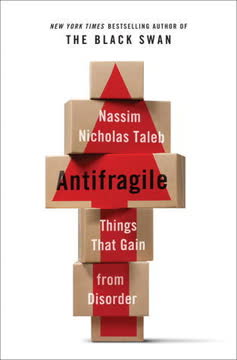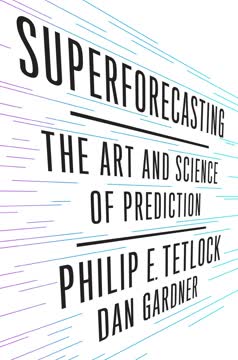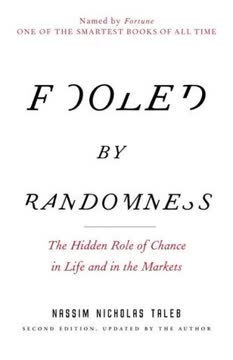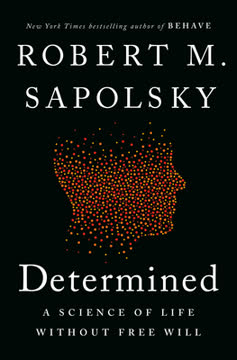Key Takeaways
1. Noise: The hidden variability in human judgment
Wherever there is judgment, there is noise, and more of it than you think.
Noise defined. Noise is the unwanted variability in judgments that should be identical. It occurs when different professionals, given the same information, reach different conclusions. This variability is often invisible and underestimated, yet it has significant consequences in various fields, including:
- Medicine: Doctors making different diagnoses for the same patient
- Criminal justice: Judges giving vastly different sentences for similar crimes
- Business: Underwriters setting widely varying premiums for the same risk
Impact of noise. The presence of noise leads to unfairness, inconsistency, and costly errors in decision-making processes. Unlike bias, which causes systematic errors in a particular direction, noise creates random scatter in judgments. This randomness can be just as detrimental as bias, if not more so, because:
- It undermines the credibility of professional judgment
- It results in unequal treatment of similar cases
- It can lead to significant financial losses in business settings
2. Bias and noise: Two distinct components of error
Bias and noise—systematic deviation and random scatter—are different components of error.
Understanding error. Error in judgment consists of two components: bias and noise. While both contribute to inaccuracy, they do so in different ways:
- Bias: The average error or systematic deviation from the target
- Noise: The variability or scatter of judgments around the average
Error equation. The relationship between bias and noise in determining overall error can be expressed mathematically:
Total Error = Bias² + Noise²
This equation highlights that:
- Reducing either bias or noise will improve accuracy
- In many cases, noise contributes more to error than bias
- Efforts to reduce error should address both components
3. The pervasive nature of noise across various fields
System noise is a serious problem: it costs us hundreds of millions.
Widespread occurrence. Noise is not limited to a few specific domains but is pervasive across various fields and professions. Examples include:
- Medicine: Variability in diagnoses, treatment recommendations, and prognoses
- Law: Inconsistencies in sentencing, bail decisions, and asylum approvals
- Business: Differences in hiring decisions, performance evaluations, and financial forecasts
- Government: Disparities in policy implementation and regulatory decisions
Hidden costs. The financial and social costs of noise are often underestimated or entirely overlooked. These costs manifest as:
- Inefficiencies in resource allocation
- Unfair treatment of individuals
- Reduced public trust in institutions
- Missed opportunities and suboptimal decisions
4. Measuring and auditing noise in organizations
To understand error in judgment, we must understand both bias and noise.
Noise audit. A noise audit is a systematic approach to measuring the level of noise within an organization or decision-making system. The process typically involves:
- Presenting multiple judges with the same cases or scenarios
- Collecting their independent judgments
- Analyzing the variability in these judgments
Types of noise. A noise audit can reveal different types of noise:
- Level noise: Consistent differences in judgment levels between individuals
- Pattern noise: Differences in how individuals respond to various case features
- Occasion noise: Variability in an individual's judgments of the same case over time
Benefits of auditing. Conducting a noise audit can:
- Raise awareness of the extent of noise in an organization
- Identify specific areas or processes prone to high noise levels
- Provide a baseline for measuring the effectiveness of noise reduction efforts
5. The psychology behind noise: Why it occurs and persists
Judgment is like a free throw: however hard we try to repeat it precisely, it is never exactly identical.
Cognitive factors. Several psychological mechanisms contribute to the generation and persistence of noise:
- Excessive coherence: The tendency to form overly consistent impressions
- Confirmation bias: Seeking information that supports initial impressions
- Availability bias: Overweighting easily recalled information
- Anchoring: Being influenced by irrelevant initial information
Illusion of agreement. People often overestimate the extent to which others would agree with their judgments. This illusion stems from:
- The difficulty in imagining alternative perspectives
- The tendency to seek confirmation of one's views
- The lack of regular feedback on judgment accuracy
Objective ignorance. The inherent unpredictability of many situations contributes to noise. People often underestimate their level of uncertainty, leading to:
- Overconfidence in predictions
- Failure to account for unknown factors
- Difficulty in distinguishing skill from luck in judgment
6. Decision hygiene: Strategies to reduce noise and improve judgments
Decision hygiene will prevent errors without knowing what they are.
Principles of decision hygiene. To reduce noise and improve judgment quality, organizations can implement several strategies:
- Favor accuracy over individual expression in judgments
- Adopt an outside view and think statistically
- Structure complex judgments into independent tasks
- Resist premature intuitions
- Obtain independent judgments before group discussion
- Use relative rather than absolute judgments when possible
Specific techniques. Various methods can be employed to implement decision hygiene:
- Guidelines and checklists: Provide structured approaches to decision-making
- The mediating assessments protocol: Break down complex decisions into separate evaluations
- Aggregation of multiple independent judgments: Leverage the wisdom of crowds
- Calibrated use of algorithms: Complement human judgment with data-driven insights
Overcoming resistance. Implementing decision hygiene often faces resistance due to:
- Belief in the superiority of intuitive judgment
- Discomfort with perceived loss of autonomy
- Underestimation of the prevalence and impact of noise
7. Balancing rules and standards: The quest for optimal noise reduction
Rules simplify life, and reduce noise. But standards allow people to adjust to the particulars of the situations.
Rules vs. standards. The choice between rules and standards represents a fundamental trade-off in noise reduction:
- Rules: Precise, inflexible guidelines that minimize discretion
- Standards: General principles that allow for case-by-case interpretation
Considerations. When deciding between rules and standards, organizations should weigh:
- The costs of decision-making: Rules typically require less effort to apply
- The costs of errors: Standards may allow for better tailoring to unique situations
- The need for consistency: Rules promote uniformity but may sacrifice adaptability
- The complexity of the domain: Standards may be more suitable for highly variable contexts
Optimal noise. The goal is not to eliminate all noise but to find the right balance that:
- Reduces harmful variability in judgments
- Maintains flexibility to address unique circumstances
- Preserves human dignity and the sense of fair treatment
- Allows for the evolution of values and practices over time
Last updated:
FAQ
What's Noise: A Flaw in Human Judgment about?
- Focus on Judgment Errors: The book explores the concept of noise, which is unwanted variability in judgments, and its impact on decision-making across fields like law, medicine, and business.
- Bias vs. Noise: It distinguishes between bias, a systematic error, and noise, which is random variability in judgments that should be identical.
- Real-World Examples: The authors provide numerous examples to illustrate how noise affects decision-making processes and emphasize the need for awareness and reduction of noise.
Why should I read Noise: A Flaw in Human Judgment?
- Improve Decision-Making: The book offers insights into how understanding noise can lead to better judgments in both personal and professional contexts.
- Evidence-Based Approach: It draws on extensive research and real-world case studies, making the content credible and applicable.
- Practical Applications: The book provides actionable advice and methods for reducing noise, making it a valuable resource for professionals across different fields.
What are the key takeaways of Noise: A Flaw in Human Judgment?
- Distinction Between Bias and Noise: Understanding the difference between systematic bias and random noise is crucial for improving judgment accuracy.
- Noise Audits: The authors introduce noise audits as a method for measuring variability in judgments within organizations.
- Importance of Algorithms: Simple algorithms often outperform human judgment due to their lack of noise, challenging the belief in human intuition's superiority.
How does Noise: A Flaw in Human Judgment differentiate between bias and noise?
- Bias Defined: Bias refers to systematic errors in judgment that consistently push decisions in one direction.
- Noise Explained: Noise is the random variability in judgments that should be the same, leading to inconsistent outcomes.
- Impact on Decision-Making: Addressing noise requires different strategies than addressing bias, making this distinction crucial for improving decision processes.
What is a noise audit, and how is it conducted in Noise: A Flaw in Human Judgment?
- Definition of Noise Audit: A noise audit is a systematic evaluation of the variability in judgments made by professionals within an organization.
- Methodology: It involves presenting the same cases to multiple judges and analyzing the differences in their judgments.
- Outcomes: The results can reveal significant discrepancies, prompting organizations to address noise and implement improvement strategies.
What is decision hygiene as described in Noise: A Flaw in Human Judgment?
- Preventive Approach: Decision hygiene refers to practices that aim to reduce noise in decision-making processes.
- Structured Processes: It involves structuring judgments into smaller, independent tasks and delaying holistic judgments until all components have been evaluated.
- Focus on Accuracy: The goal is to enhance the accuracy of judgments by minimizing variability caused by individual biases and cognitive errors.
How does noise affect decision-making in medicine according to Noise: A Flaw in Human Judgment?
- Variability in Diagnoses: Different doctors can arrive at varying diagnoses for the same patient, highlighting noise in medical judgments.
- Impact on Patient Care: High levels of noise can lead to misdiagnoses and inconsistent treatment recommendations.
- Case Studies: Examples from medical practice illustrate how noise manifests in areas like radiology and psychiatry.
How do algorithms compare to human judgment in predictive tasks in Noise: A Flaw in Human Judgment?
- Superiority of Algorithms: Algorithms, particularly simple models, often outperform human judgment due to their lack of noise.
- Examples of Success: The book provides examples where algorithms have successfully predicted outcomes in fields like finance and healthcare.
- Implications for Professionals: Professionals are encouraged to integrate algorithmic approaches to enhance accuracy and reduce noise.
What is the mediating assessments protocol mentioned in Noise: A Flaw in Human Judgment?
- Structured Evaluation Process: It is a structured approach to decision-making that breaks down complex judgments into independent assessments.
- Independent Assessments: Each assessment is evaluated separately to minimize biases and ensure objective criteria.
- Delayed Holistic Judgment: Final decisions are made only after all assessments, allowing for a more informed conclusion.
What strategies can be implemented to reduce noise in decision-making according to Noise: A Flaw in Human Judgment?
- Decision Hygiene: Practices like standardizing procedures, using checklists, and implementing noise audits are recommended.
- Training and Education: Training professionals on the impact of noise and bias can improve decision-making practices.
- Use of Algorithms: Integrating algorithms into decision-making processes can help reduce noise and enhance accuracy.
What are the different types of noise discussed in Noise: A Flaw in Human Judgment?
- Level Noise: Variability in the average severity of judgments made by different individuals.
- Pattern Noise: Differences in how individuals respond to specific cases, reflecting unique biases and perspectives.
- Occasion Noise: Variability in judgments made by the same individual at different times, influenced by mood and circumstances.
What are the best quotes from Noise: A Flaw in Human Judgment and what do they mean?
- “Wherever there is judgment, there is noise—and more of it than you think.”: Emphasizes that noise is a pervasive issue in decision-making.
- “The rule of law calls for a body of impersonal rules, applicable across the board.”: Advocates for standardized decision-making processes to reduce noise.
- “You are not the same person at all times.”: Highlights occasion noise, reminding readers of the variability in individual judgments.
Review Summary
Noise receives mixed reviews, with some praising its insights on decision-making variability and others criticizing its length and repetitiveness. Many find the concept of noise in judgments valuable, but some argue the book lacks novelty compared to Kahneman's previous work. Readers appreciate the practical applications in fields like medicine and law, but some find the writing style dry and overly academic. The book's emphasis on statistical thinking and decision hygiene is noted, though opinions vary on its overall impact and readability.
Similar Books









Download PDF
Download EPUB
.epub digital book format is ideal for reading ebooks on phones, tablets, and e-readers.








